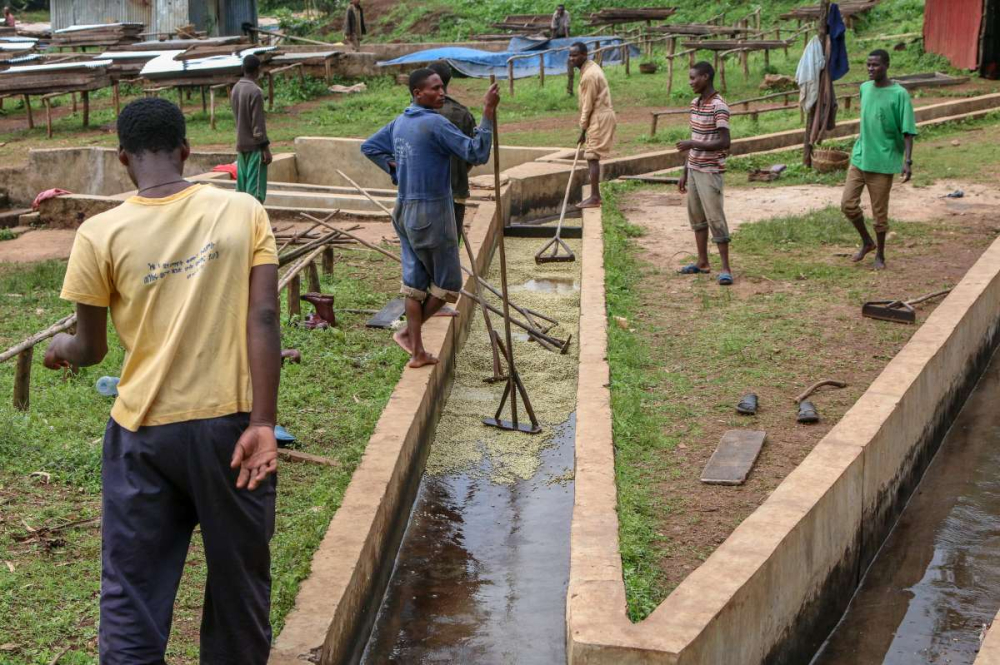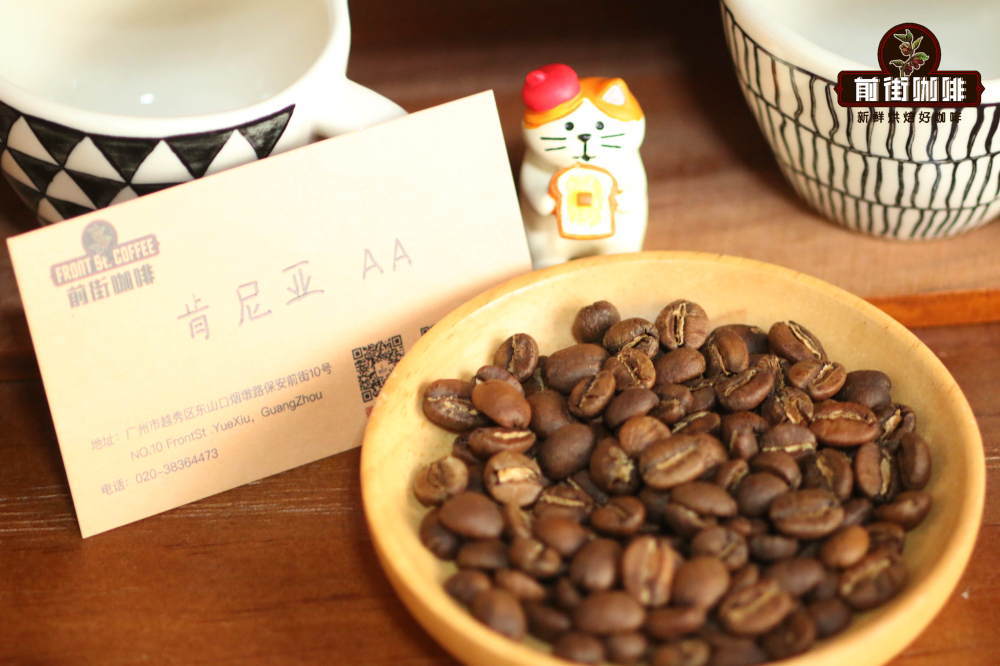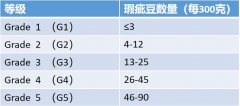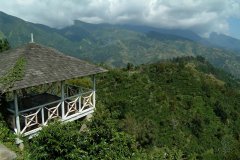What is the coffee grading system in Kenya? Classification characteristics of eight grades of Kenyan coffee beans
Kenya, as a neighbor of Ethiopia, where coffee originated, is very famous for its coffee. People in the coffee industry all think that Kenyan coffee is one of its favorite products. This is because Kenyan coffee contains every feeling we want from a good cup of coffee. It has wonderful and satisfying aromas, well-balanced acidity, well-proportioned particles and excellent fruit flavors. The taste is so unique that there is almost no similar coffee. Kenyan coffee is characterized by a distinctive fruity aroma. Try to find this flavor in the coffee and pay attention to how it feels in the mouth. One of the common fruit aromas is citrus. Kenyan coffee has a multi-layered taste and the acidity of fruit juice, perfect grapefruit and wine flavor, medium mellow.

Coffee beans first entered Kenya in the 19th century, when Ethiopian coffee drinks were imported into Kenya through southern Yemen. But it was not until the early 20th century that the bourbon was introduced by the St. Austen Mission (St.AustinMission).
Coffee cultivation in Kenya
Located in eastern Africa, the equator runs through central China, and the Great Rift Valley stretches north and south. It is bordered by Somalia to the east, Tanzania to the south, Uganda to the west, Ethiopia and Sudan to the north, and the Indian Ocean to the southeast. There are many plateaus in the territory, with an average elevation of 1500 meters. The central peak of Kirinaga (Mount Kenya) is 5199 meters above sea level and the top of the mountain is covered with snow, making it the second highest peak in Africa.
Kenya is a tropical region, with two rainy seasons a year and two harvests, with 60% concentrated from October to December and 40% from June to August. Coffee is mainly grown in volcanic areas from the capital Narobi to the mountains of Kenya at an altitude of 1600-2100 meters. This height is suitable for the development of coffee bean flavor, because the mountain temperature is lower, the growth is slow, the aroma components of coffee beans have been fully developed, the sour taste is more obvious, and the texture is harder. This fertile moonbend-shaped coffee area is the main producer of Kenyan boutique beans.
The main coffee producing areas in Kenya are six major producing areas, including: Thika, Kirinyaga, and the western side of Mount Kenya (Mt. Kenya West, Nyeri, Kiambu, Muranga. The harvest periods of the six major producing areas are all from October to December (the main production season) and from June to August (the by-product season).

So how do they grade it? Kenya coffee beans are graded mainly according to the size of coffee particles, usually divided into eight grades.
E (elephant bean): the "E" here stands for Elephant, that is, "elephant", but it is not the elephant bean in the coffee bean variety (Maragogype). It is a kind of bean whose two seeds are intertwined with each other because of abnormal development, forming a "seemingly one" bean, which can be regarded as a flaw. Generally speaking, there are two seeds in a fruit, affixed face to face, so there will be a flat side, called flat beans, mother beans. E-grade beans are beans in which two seeds stick together and become super-large in the process of growth. aah! aah! The size of E-grade bean particles is more than 18 mesh (1 mesh is 1 to 64 inches), and the number is rare.
AA: the size of this grade is about 17018 items (about 6.7~7.1mm), which is the Kenyan coffee grade that most people often hear. In boutique coffee, this grade is usually called AA TOP, and it is also a bean that most coffee shops will sell. But AA does not represent the best, it is just that the size of beans should not be confused with flavor.
AB: most coffee beans are in this category. The main reason why they are called AB is that A with a mesh size of 6.80 mm,B is 6.20mm, and these two sizes of coffee beans (An and B) are sold together, so they are called AB, with a size of about 15 million 16 mesh (about 6.0~6.4mm).
C: the particle size falls between 14015 mesh (about 5.6~6.0mm), which is smaller than that of B grade.
PB: the full name is Peaberry, also known as small round beans, can also be called public beans. Compared with ordinary flat beans, this is also rare, accounting for about 10% of all coffee beans, mainly because only one seed in the fruit has developed to get small and round beans. Some people will particularly like the flavor of PB, so they will pick out the PB and sell it.
TT: these coffee beans are light beans selected from AA and AB beans by air sorter. They are usually light in weight and substandard in hardness, as well as broken and defective beans.
T: lighter beans, broken beans, and even broken fragments of beans selected from C-grade beans.
MH/ML: this kind of coffee beans will not be exported. They are usually coffee beans that are overripe and fall to the ground. They are of poor quality, accounting for about 7% of all coffee beans, only for the Kenyan domestic market.

Important Notice :
前街咖啡 FrontStreet Coffee has moved to new addredd:
FrontStreet Coffee Address: 315,Donghua East Road,GuangZhou
Tel:020 38364473
- Prev

How are the boutique coffee beans graded? Coffee origin Ethiopian coffee bean grade discrimination
Sometimes we will see English and numbers, G1, G2, G3, AA, PB, SHB, SHG, HB and so on. Today, we will introduce the coffee bean grade of Ethiopia. It uses G1, G2, G3, G4, G5 and so on. To grade it. So what are their standards? The grade of coffee beans is usually based on the defect rate and the size of beans.
- Next

What is the grade of Jamaica Blue Mountain Coffee beans? Introduction to the grade standard of Jamaican blue mountain coffee beans.
Jamaica's blue mountain coffee beans are known to everyone in the coffee industry, and it has a long history. Even for those who don't drink coffee, when it comes to coffee, when it comes to blue mountain coffee, let's introduce the grade of Jamaican blue mountain coffee beans and what a standard it is. Jamaica (Jamaica) is one of the islands in the Caribbean. The Negro and Muratto
Related
- Beginners will see the "Coffee pull flower" guide!
- What is the difference between ice blog purified milk and ordinary milk coffee?
- Why is the Philippines the largest producer of crops in Liberia?
- For coffee extraction, should the fine powder be retained?
- How does extracted espresso fill pressed powder? How much strength does it take to press the powder?
- How to make jasmine cold extract coffee? Is the jasmine + latte good?
- Will this little toy really make the coffee taste better? How does Lily Drip affect coffee extraction?
- Will the action of slapping the filter cup also affect coffee extraction?
- What's the difference between powder-to-water ratio and powder-to-liquid ratio?
- What is the Ethiopian local species? What does it have to do with Heirloom native species?

